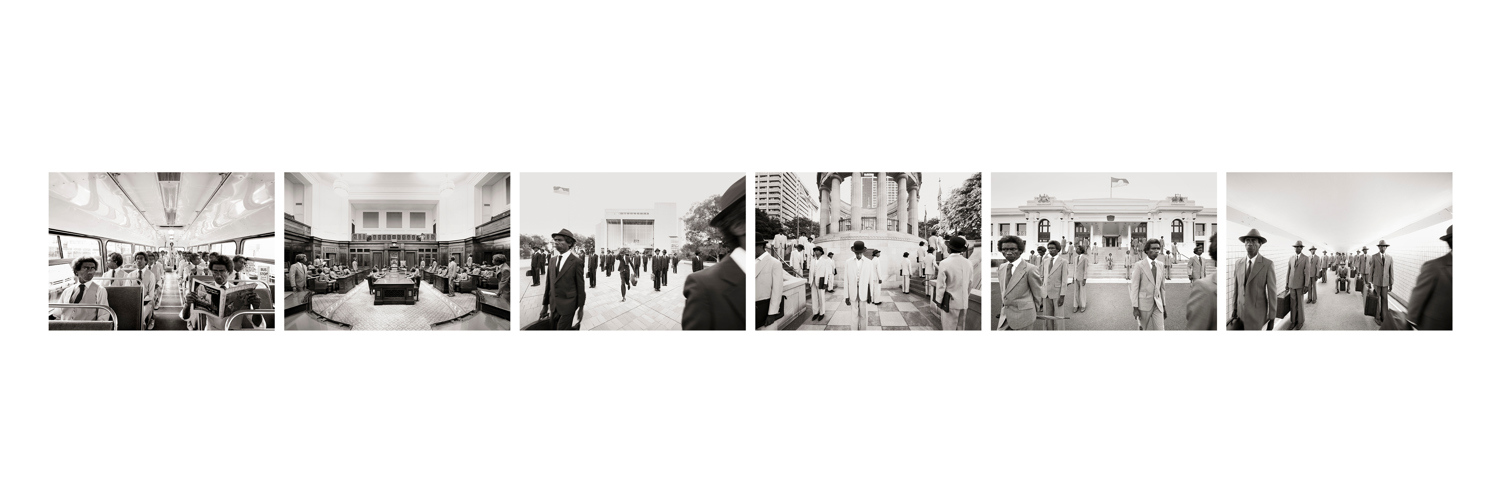Central to this work is the question ‘what if Indigenous people were 96 per cent of the Australian population and non-Indigenous people defined as the four per cent?’ or put another way, what if Aboriginal people were the majority, not the minority?
To illustrate this idea, Cook has used repetition. For each image in the series, he has photographed an Aboriginal man numerous times in various poses across a location and then merged the photos so that the same man is repeated in the one image. The locations that Cook chose include urban sites such as a train station tunnel, a bus, and city streets as well as more iconic places including Old Parliament House, the Senate, and the High Court of Australia.
By populating these locations with a solely Aboriginal presence, they become a potent reminder of the lack of Indigenous representation within our government and judicial systems and the business world. But they go one step further. By replicating the same person, Cook is also questioning social conformity and the downside of being ‘the norm’ regardless of race.
As Bruce McLean suggests:
"Cook creates an alternate space where Aboriginal people are not just equal, nor have they simply become the norm; rather, they are the only—and, by doing so, Cook draws discussions of colonisation out from the murky waters of race relations."1
1 Bruce McLean, “Michael Cook,” in UnDisclosed: 2nd National Indigenous Art Triennial. Canberra: National Gallery of Australia, 2012.
Michael Cook
Majority rule 2014
Left to right
Majority Rule (Bus), Majority Rule (Senate), Majority Rule (Court), Majority Rule (Memorial), Majority Rule (Parliament), Majority Rule (Tunnel)
inkjet print on paper
edition 8
Monash University Collection
Purchased 2016
Courtesy the artist, Andrew Baker Art Dealer, Brisbane and THIS IS NO FANTASY, Melbourne

